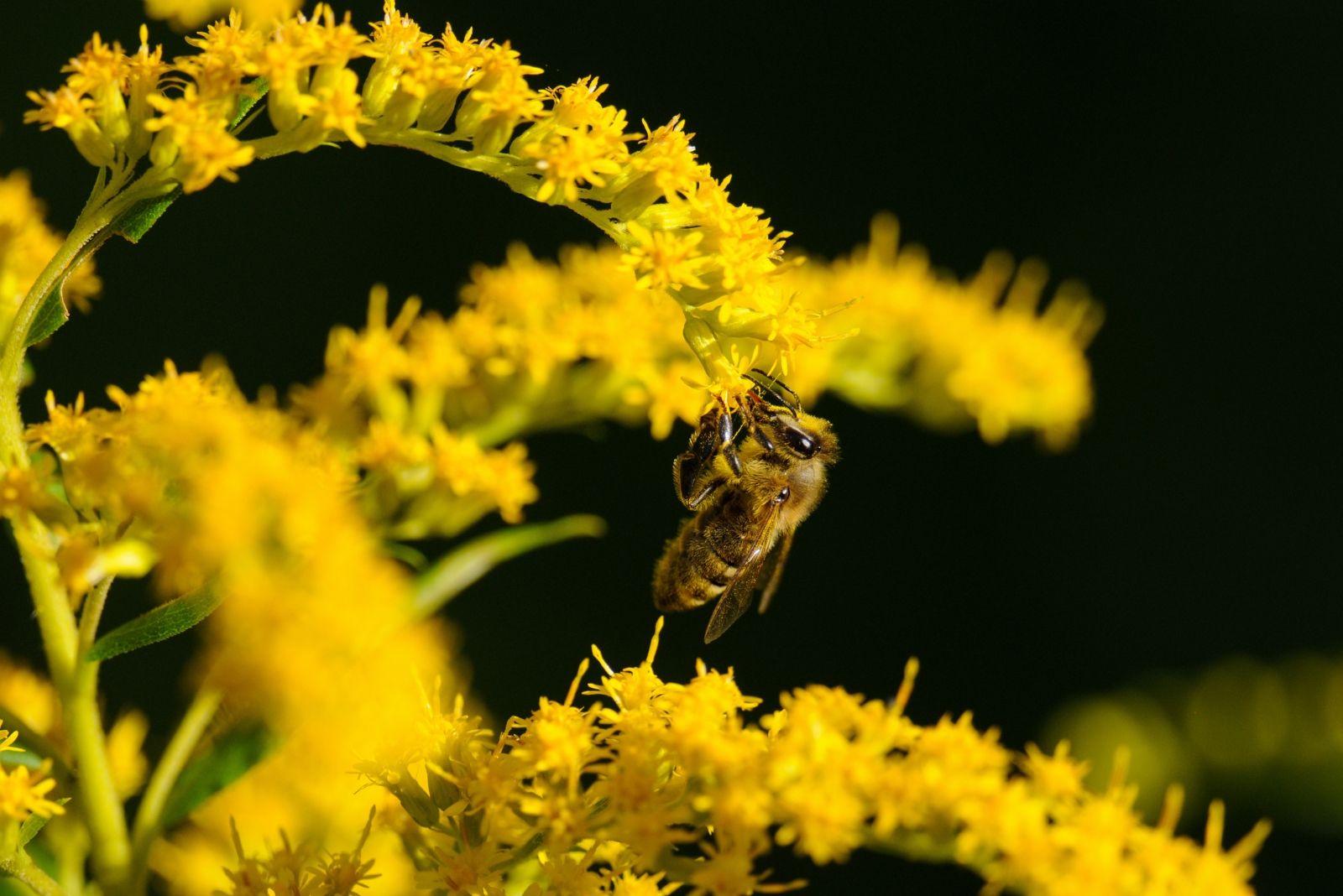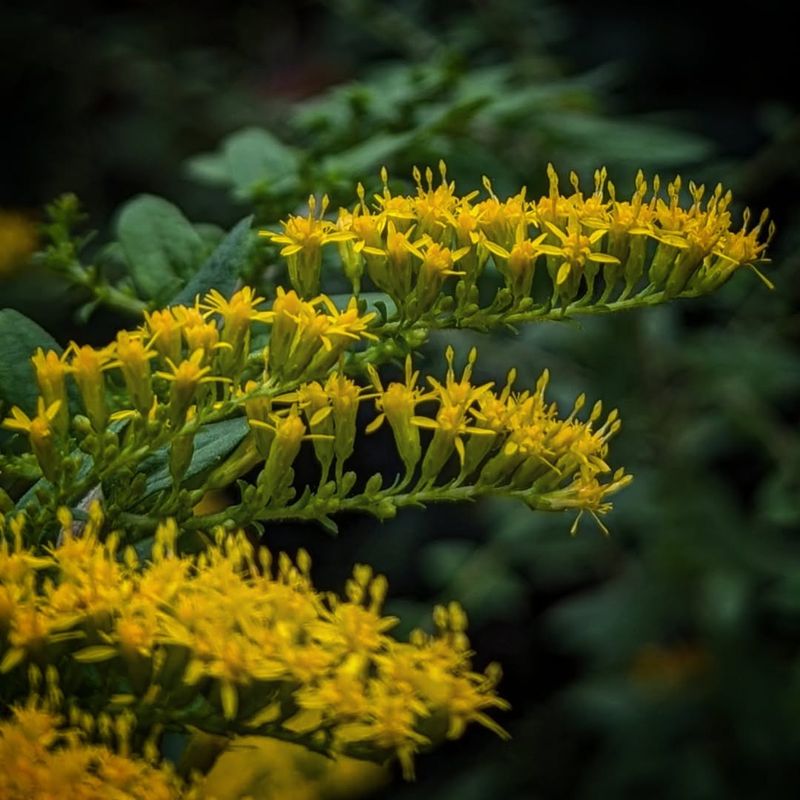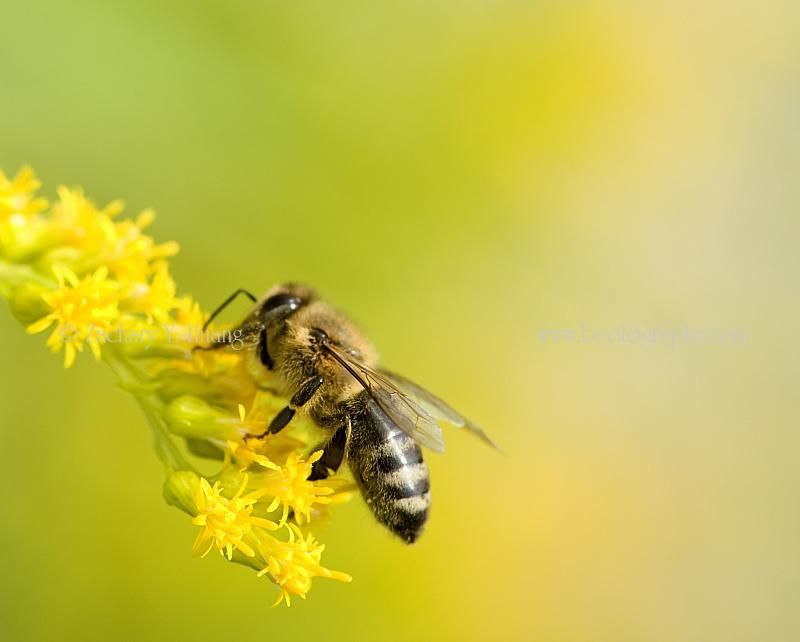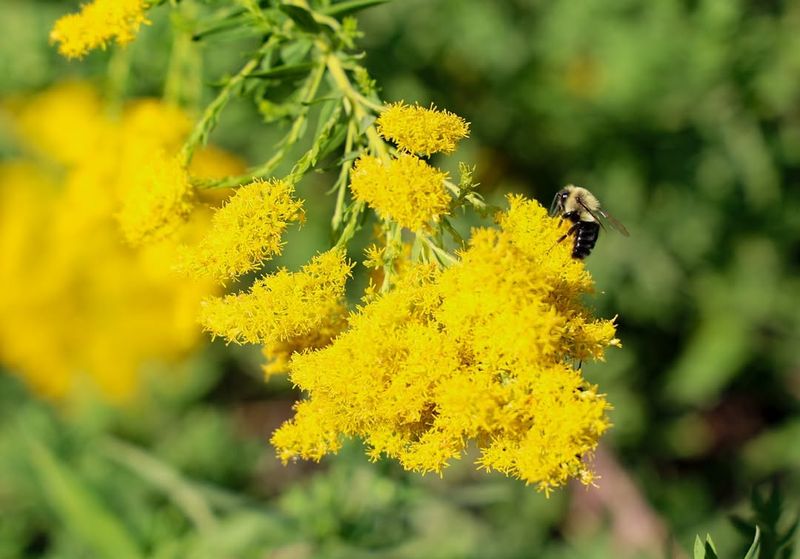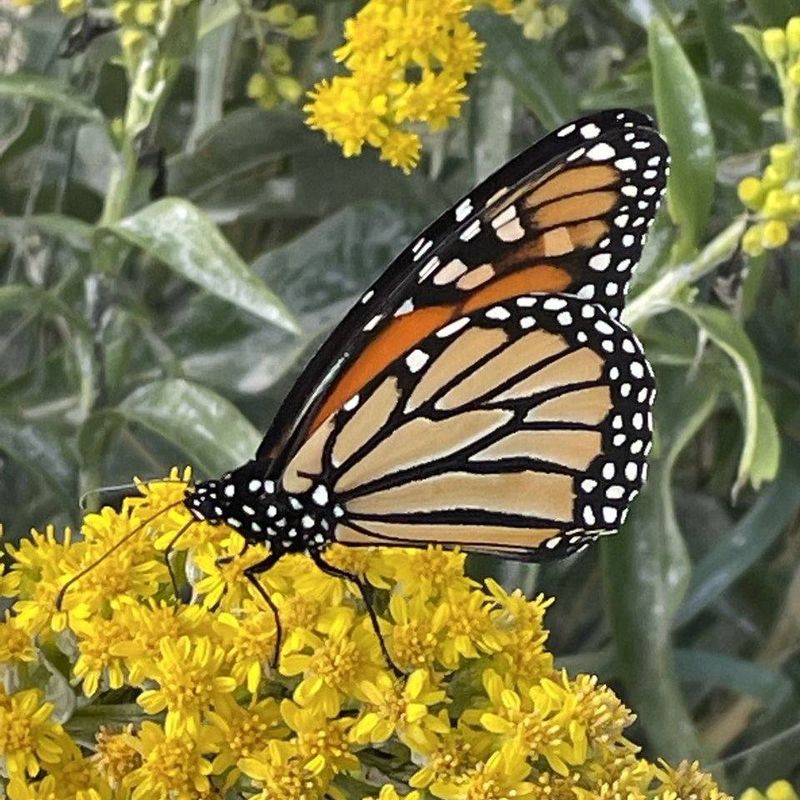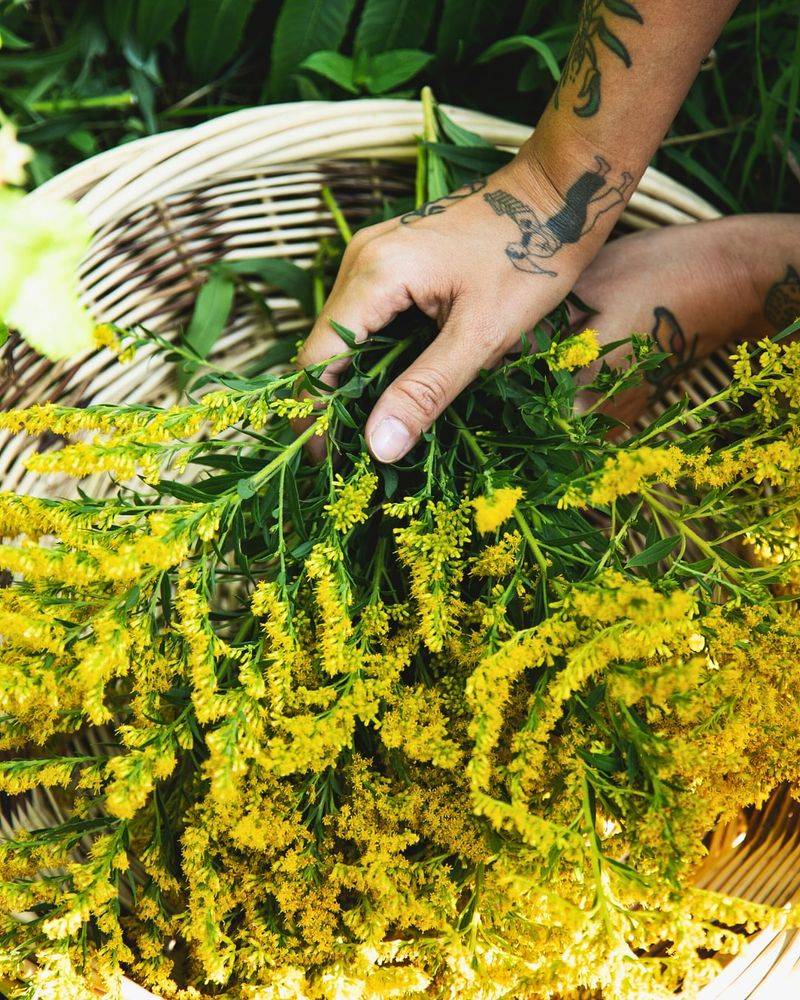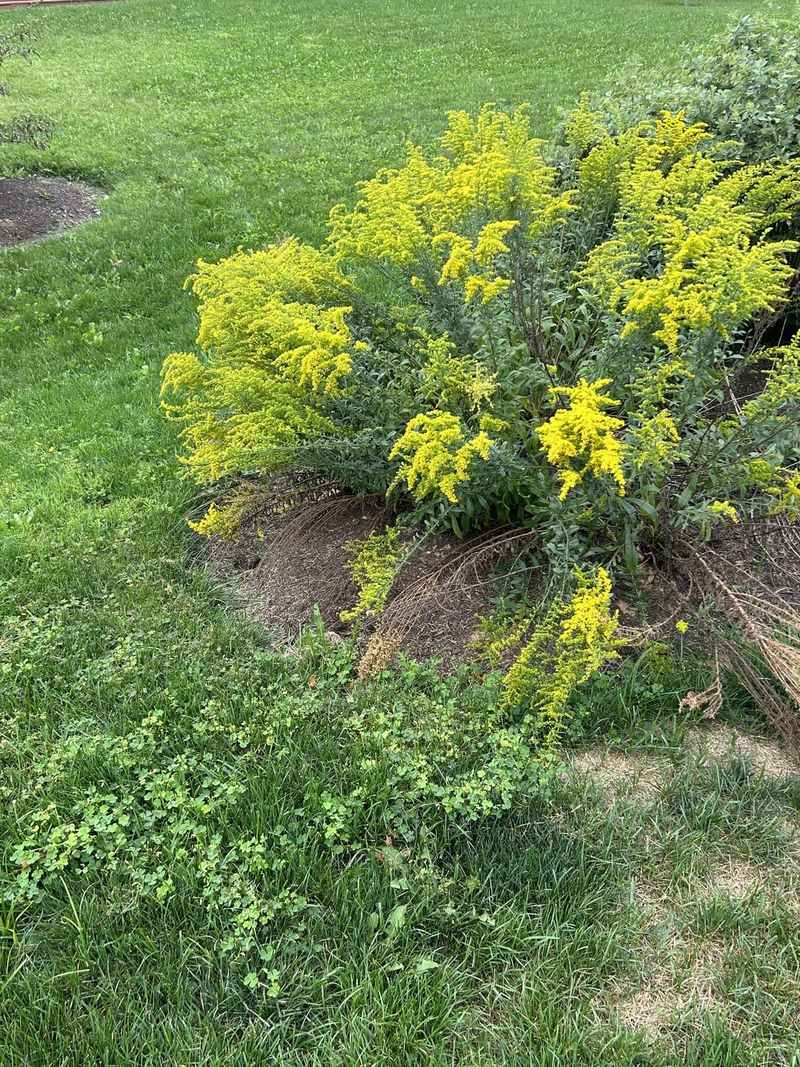Native plants play a crucial role in Tennessee gardens by supporting local pollinators and strengthening the natural landscape. As fall approaches and many flowers fade, one species offers bright color and abundant nectar exactly when bees need it most.
That plant is goldenrod, a standout source of late-season forage that transforms ordinary yards into thriving bee havens.
1. Goldenrod Doesn’t Cause Your Fall Allergies
Ragweed, not goldenrod, triggers those sneezing fits and itchy eyes every autumn. Goldenrod pollen is too heavy and sticky to float through the air like ragweed does.
Bees carry goldenrod pollen from flower to flower instead of it drifting into your nose. Both plants bloom at the same time, which confuses people about the real troublemaker.
Goldenrod’s bright yellow flowers get blamed simply because they’re so easy to spot while ragweed hides in plain sight with tiny green blooms.
2. Over 100 Bee Species Visit Goldenrod Blooms
Goldenrod acts like an all-you-can-eat buffet for pollinators during late summer and fall in Tennessee. Honeybees, bumblebees, sweat bees, and countless native species flock to these golden towers for nectar and pollen.
When other flowers disappear, goldenrod keeps feeding hungry bees preparing for winter. Female bees collect protein-rich pollen to feed their young.
Male bees often sleep on goldenrod stems overnight, clinging to the flowers until morning arrives and they can feed again.
3. Native Americans Used Goldenrod As Medicine
Long before modern pharmacies existed, indigenous peoples brewed goldenrod tea to soothe sore throats and reduce fevers. Different tribes applied crushed leaves directly to bee stings and minor wounds to ease pain and swelling.
Some groups chewed goldenrod leaves for toothaches or made poultices for skin conditions. Cherokee healers particularly valued this plant for treating kidney problems.
Today, Tennessee herbalists still recognize goldenrod’s anti-inflammatory properties, though you should consult doctors before trying any plant remedies yourself.
4. Goldenrod Thrives In Poor Soil Conditions
Unlike fussy garden flowers demanding rich soil and constant fertilizer, goldenrod actually prefers lean conditions. Clay, sand, or rocky ground won’t stop these tough Tennessee natives from flourishing beautifully.
Adding too much compost or fertilizer makes goldenrod grow tall and floppy instead of sturdy and upright. Poor soil keeps plants compact with stronger stems that don’t need staking.
Your neglected garden spots where nothing else grows become perfect homes for goldenrod that’ll reward you with minimal effort required.
5. Butterflies Rely On Goldenrod For Migration Fuel
Monarch butterflies traveling thousands of miles to Mexico stop at goldenrod patches to tank up on high-energy nectar. Without these crucial refueling stations, many butterflies wouldn’t survive their incredible journey south.
Painted ladies, swallowtails, and sulphurs also depend on goldenrod’s late-season blooms for sustenance. Your Tennessee garden becomes a vital rest stop along ancient migration highways.
Watching butterflies swarm your goldenrod plants each September creates magical moments you’ll remember long after summer ends.
6. Goldenrod Blooms Last Six To Eight Weeks
Starting in late August, goldenrod gradually opens its sunny flowers and keeps blooming well into October across Tennessee. Each flower cluster contains dozens of tiny blossoms that open in waves rather than all at once.
Cutting spent flower stalks encourages fresh blooms to develop lower on the plant. Different goldenrod species bloom at slightly different times, extending the show even longer.
Pairing early and late varieties together creates continuous color and bee food throughout the entire autumn season in your yard.
7. Kentucky Named Goldenrod Its Official State Flower
Did you know? Kentucky chose goldenrod as its state flower way back in 1926, recognizing how these golden beauties blanket fields and roadsides every fall. Nebraska and South Carolina also picked goldenrod for their official flower.
Tennessee hasn’t officially adopted goldenrod, but these natives grow wild throughout the state anyway. Pioneers called goldenrod fields “rivers of gold” flowing across hillsides.
Modern gardeners are rediscovering what earlier generations knew—goldenrod belongs in every landscape celebrating native plants and local wildlife.

